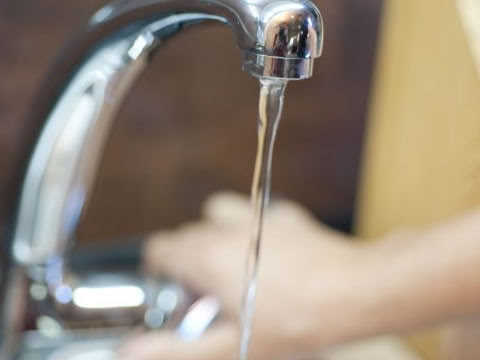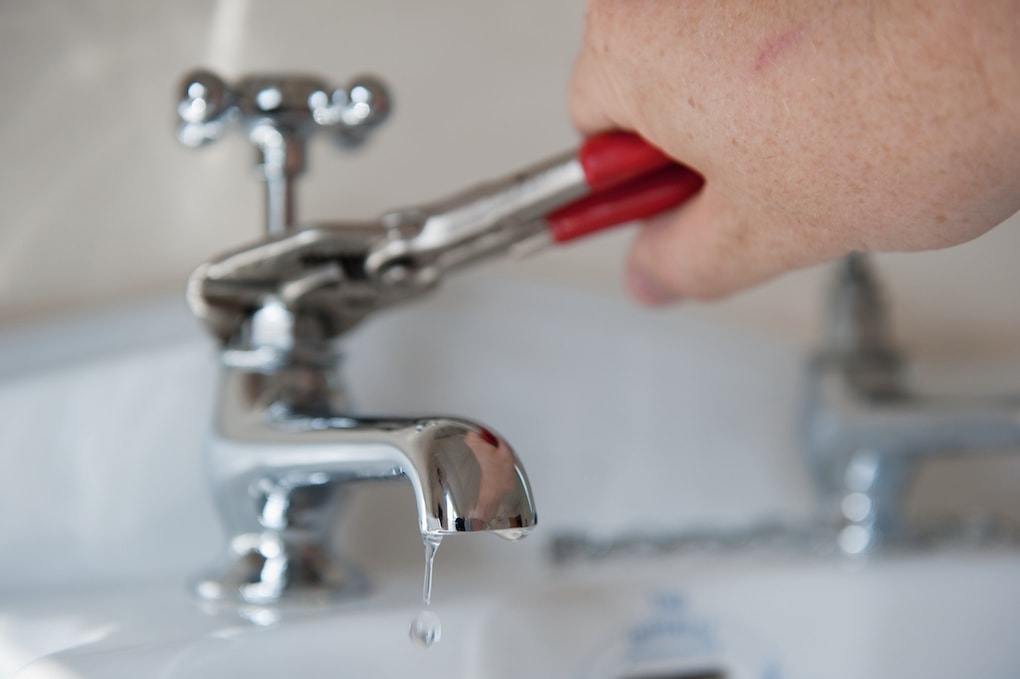An Handbook to Addressing Low Water Pressure in Your Home
An Handbook to Addressing Low Water Pressure in Your Home
Blog Article
We've encountered this post involving Dealing with Low Water Pressure in Your Home directly below on the web and concluded it made perfect sense to write about it with you in this article.

Low water pressure in your home can be an irritating trouble, affecting whatever from showering to cleaning dishes. If you're experiencing weak water flow, there are numerous possible reasons and options to check out. In this overview, we'll discuss usual reasons for low tide pressure and useful steps to address the problem effectively.
Introduction to Low Tide Pressure
Low tide pressure happens when the circulation of water from your faucets, showers, and various other components is weak than normal. This can make day-to-day jobs more tough and much less efficient. Understanding the causes of low water stress is vital to finding the appropriate option.
Common Reasons For Low Water Pressure
Pipeline Obstructions
With time, pipes can come to be blocked with mineral deposits, debris, or debris, limiting the circulation of water. This is a common issue in older homes with galvanized steel pipes.
Rust
Deterioration within pipes can bring about leaks and reduced water pressure. Rust buildup can tighten water flow, specifically in maturing plumbing systems.
Faulty Pressure Regulators
Stress regulators are accountable for maintaining consistent water stress in your home. If they malfunction, it can result in low water stress or unequal flow throughout your house.
Metropolitan Water Issues
Often, the problem exists outside your home. Community water supply problems, such as main line leakages or upkeep job, can briefly decrease water stress in your area.
How to Identify Low Water Stress
Checking Faucets and Components
Begin by testing the water pressure at different faucets and components throughout your home. If the problem is isolated to details areas, it may suggest localized problems.
Inspecting Pipes
Examine visible pipelines for indications of leaks, corrosion, or clogs. Take notice of any uncommon noises, such as knocking or rattling pipes, which could suggest concerns within the plumbing system.
Consulting with a Plumber
If you're incapable to determine the root cause of low water pressure, take into consideration working with a professional plumber to carry out a complete inspection. They can recognize underlying problems and recommend proper services.
Do It Yourself Solutions to Take Care Of Low Tide Stress
Cleaning Up Aerators and Showerheads
Mineral deposits can gather in aerators and showerheads, decreasing water circulation. Remove and clean these components consistently to improve water pressure.
Flushing Hot Water Heater
Debris accumulation in the hot water heater can restrict circulation and reduce performance. Flushing the tank periodically aids remove sediment and preserve optimal performance.
Checking Pressure Regulator
Guarantee that the pressure regulator is operating appropriately. Adjusting or changing the regulatory authority can assist recover correct water pressure throughout your home.
Cleaning Clogs in Pipes
For minor clogs, attempt utilizing a plumbing serpent or chemical drainpipe cleaner to clear obstructions in pipes. Be cautious when making use of chemicals and adhere to security standards.
When to Call an Expert Plumber
If do it yourself initiatives fail to resolve the concern or if you presume substantial plumbing problems, it's finest to seek help from an accredited plumber. They have the experience and devices to attend to complex concerns securely and successfully.
Safety Nets to Maintain Water Pressure
Regular Maintenance
Schedule routine upkeep for your plumbing system to stop issues such as rust, leaks, and blockages. Attending to minor issues early can help prevent more significant repair services in the future.
Setting Up a Pressure Booster
Take into consideration installing a pressure booster pump to improve water pressure in areas with regularly low circulation. This can be specifically advantageous for multi-story homes or buildings with high-demand components.
Monitoring Water Use
Bear in mind water use behaviors and avoid ill-using the plumbing system. Easy adjustments, such as staggering showers and laundry tons, can help keep sufficient water stress.
Final thought
Dealing with low tide pressure can be irritating, however determining the underlying reasons and implementing suitable services can bring back optimal flow throughout your home. Whether it's cleansing aerators, evaluating pipelines, or seeking advice from a plumber, taking positive actions can make sure a steady supply of water for your everyday requirements.
FOUR WAYS TO FIX LOW WATER PRESSURE NOW
Turning on a shower or faucet only to find the water comes out in a sad, slow drizzle is never a good feeling. How exactly are you supposed to wash a pan or take a quick shower when it takes 10 minutes just to rinse off a little soap? The good news is that when your water pressure is bad, there's always a cause: typically one that can be easily fixed. Here are some of the most common causes of low pressure and what you can do to fix the issue:
DEBRIS AND MINERAL DEPOSIT BUILDUPS
If you notice low water pressure from just one or two of the fixtures in your house, the problem likely has to do with debris buildup. Water is full of minerals and other debris, all of which can accumulate in your pipes and on your fixtures. This can cause a blockage that affects how much water flows through. To fix this, try filling a small plastic bag with white vinegar, and use a rubber band to hang it around your showerhead or faucet. Let the head of the fixture soak for a few hours, and the vinegar should loosen the deposits.
WATER LEAKS
Leaks are another common cause of low water pressure. If water is flowing out of your plumbing through a hole or crack before it can reach your fixture, the pressure coming out of the faucet or showerhead will be lower. A plumbing professional is your best bet for finding and repairing a leak in your water supply pipes.
Leaks are another common cause of low water pressure. If water is flowing out of your plumbing through a hole or crack before it can reach your fixture, the pressure coming out of the faucet or showerhead will be lower. A plumbing professional is your best bet for finding and repairing a leak in your water supply pipes.
FOUR WAYS TO FIX LOW WATER PRESSURE NOW
Turning on a shower or faucet only to find the water comes out in a sad, slow drizzle is never a good feeling. How exactly are you supposed to wash a pan or take a quick shower when it takes 10 minutes just to rinse off a little soap? The good news is that when your water pressure is bad, there's always a cause: typically one that can be easily fixed. Here are some of the most common causes of low pressure and what you can do to fix the issue:
DEBRIS AND MINERAL DEPOSIT BUILDUPS
If you notice low water pressure from just one or two of the fixtures in your house, the problem likely has to do with debris buildup. Water is full of minerals and other debris, all of which can accumulate in your pipes and on your fixtures. This can cause a blockage that affects how much water flows through. To fix this, try filling a small plastic bag with white vinegar, and use a rubber band to hang it around your showerhead or faucet. Let the head of the fixture soak for a few hours, and the vinegar should loosen the deposits.
WATER LEAKS
Leaks are another common cause of low water pressure. If water is flowing out of your plumbing through a hole or crack before it can reach your fixture, the pressure coming out of the faucet or showerhead will be lower. A plumbing professional is your best bet for finding and repairing a leak in your water supply pipes.
Leaks are another common cause of low water pressure. If water is flowing out of your plumbing through a hole or crack before it can reach your fixture, the pressure coming out of the faucet or showerhead will be lower. A plumbing professional is your best bet for finding and repairing a leak in your water supply pipes.
A VALVE ISSUE
If you have low water pressure throughout your home, check your main shut-off valve to make sure it's completely open. You may also want to see if there's a pressure-reducing valve installed. If there is, have a plumber help you adjust the settings to get the pressure you're looking for.
OTHERS USING WATER
Believe it or not, your low water pressure could be caused by your neighbors. If you notice low pressure at certain times of day, it may be because you and the people living next to you have similar schedules - when everyone is showering at the same time, the pressure will be lower in every home. Low pressure throughout the neighborhood may also be caused by an issue with your municipal water supply. If that's the case, call the supplier to see if they're working on the issue.
https://www.rotorooter.com/blog/water-leaking/low-water-pressure-fixes/

I discovered that page about while browsing the internet. If you enjoyed reading our article please make sure you remember to pass it around. Thanks a lot for going through it.
Call Today Report this page